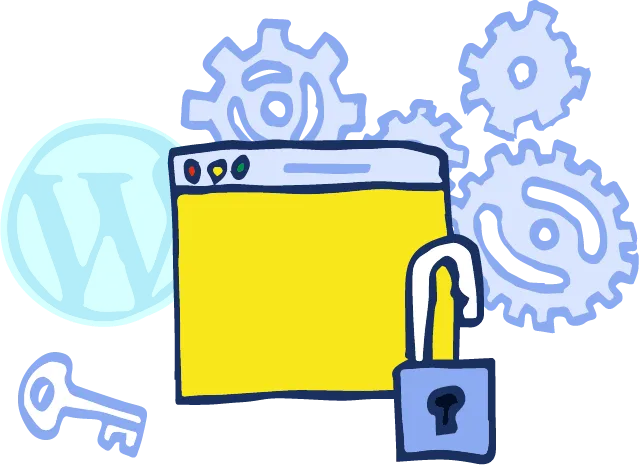How Can You Deliver Software That Wins Customers and Beats the Competition?
Let me paint a picture for you: You’re a business owner or a product manager, racing against time to get your software out the door. Your customers are clamoring for new features, your competitors are breathing down your neck, and your development team is drowning in an endless backlog.
I’ve seen this struggle play out time and time again. The problem is clear—traditional development approaches are too slow, too rigid, and too disconnected from what customers actually need. They leave you stuck in a cycle of delays, wasted effort, and missed opportunities.
But here’s the good news: there’s a way to break free. By leveraging Minimum Marketable Features (MMFs)
Speed and value are everything. Customers expect constant innovation—new features that solve their problems, delivered yesterday. Meanwhile, businesses like yours need to stay competitive, grow revenue, and keep costs in check.
I’ve worked with countless clients who’ve faced this issue. They pour months into building massive updates, only to launch and hear crickets—or worse, complaints that the product misses the mark. The stats back this up: over 60% of features in large products are rarely or never used (Excella). That’s wasted time, money, and opportunity. So, what’s keeping you from delivering software that hits the bullseye every time? Are you spending too long perfecting features your customers don’t even care about?
Maybe you’re using a waterfall approach—planning everything upfront, coding for months, then releasing a big, shiny update. Or perhaps you’ve dipped your toes into agile but still end up with sprawling sprints that delay delivery. Sound like you? These methods often lean on guesswork—building what you think customers want, only to find out too late that you were off target.
The shortcomings are glaring. Waterfall is inflexible—once you’re locked in, pivoting is a nightmare. Even agile can falter if you’re not ruthless about prioritization, leaving you with half-baked features or scope creep. The result? Delayed launches, frustrated customers, and a team burned out from chasing moving goalposts. I’ve seen clients lose market share because competitors beat them to the punch with simpler, faster releases.
Now, imagine a world where you could deliver software that’s lean, laser-focused, and loved by your customers—every single time. What would that take? Knowing the pitfalls of slow, unwieldy development, the perfect solution would:
- Speed Up Delivery: Get valuable features to market in weeks, not months.
- Minimize Waste: Build only what customers need, cutting out the fluff.
- Adapt Quickly: Respond to feedback and market shifts without derailing your roadmap.
- Boost Satisfaction: Delight users with regular, meaningful updates.
That’s where Minimum Marketable Features (MMFs) come in. An MMF is a small, self-contained feature that delivers real value fast. Think of it as the golden ticket in a chocolate bar—small, but oh-so-satisfying. By focusing on MMFs, you can release software that wins customers and leaves competitors scrambling to catch up.
- Lightning-Fast Releases
Agile adoption skyrocketed from 37% in 2020 to 86% in 2021 (Parabol), and MMFs are the secret sauce. - Less Risk, More Reward
Small releases mean small bets. We test each MMF with real users, ensuring it’s a hit before doubling down. Say goodbye to the 60% of unused features clogging up your product. - Customer-Centric Development
My process puts your users first. Continuous feedback loops mean every MMF solves a real problem, boosting satisfaction and loyalty. In fact, 88% of pros say agile improves their quality of life (Zippia). - Revenue Boost
Faster releases and happier customers? That’s a recipe for growth. One client saw a 30% jump in satisfaction and a 20% cut in development time after switching to MMFs.

What would it mean for your bottom line if you could ship twice as fast with half the risk?
MMFs are powerful, but they’re not magic. Here’s what we might run into:
- Picking the Right Features
Pinpointing value is tricky—49% of product managers struggle with market research (Mind the Product). You need a deep user research and data-driven prioritization to the table, ensuring every MMF lands. - Speed vs. Quality
“You can’t rush perfection,” right? Wrong. I balance rapid delivery with rigorous testing, so your features are fast and flawless. No compromises. - Feedback Overload
Gathering input is key, but it can bog you down. Streamline the process with surveys, analytics, and interviews, turning raw data into actionable insights. - Keeping the Big Picture
Small features need to fit a grand vision. Craft roadmaps that tie every MMF to your goals, building a product that’s cohesive and compelling.
What’s the biggest hurdle in your development process right now? How could tackling it change everything?
- Trello: Started with boards and cards—simple, but genius. They added MMFs like due dates and labels, growing into a fan favorite without overwhelming users.
- Slack: Launched with messaging, then sprinkled in MMFs like channels and integrations. Each step made it indispensable.
- Dig into Your Users
- Prioritize Like Pros
- Break It Down
- Ship and Learn
The old way of building software is a sinking ship—slow, risky, and out of touch. With MMFs, you’ll steer toward success. Faster releases, happier customers, and a competitive edge—it’s all within reach.
What’s holding your software back today?
Meet Dennis, a seasoned software engineer with 11 years of experience transforming ideas into digital reality. He has successfully guided countless projects from concept to deployment, bringing innovative solutions to life. With a passion for crafting exceptional software, Dennis has helped countless clients achieve their goals.
Click here to learn more
Popular Posts
- How Can Strategic Software Solutions Propel Your Business to the Next Level?
- What is the Key to Startup Success?
- Why Do Some Products Soar While Others Flounder?
- Why Is Consistent Blogging Critical for Your Go-To-Market Strategy?
- Why Do Some Products Stick While Others Don't?
- Why Do Top Engineers Choose Where They Work?
- The Ultimate Solution for Faster, Scalable, and Customizable Web Design Without the CSS Headaches
- Revolutionizing Your Software Experience
- How Can You Overcome Common Pitfalls in Enterprise Application Software Development and Achieve Success?
- Discover the Ultimate Solution to Streamline Your Workflow and Boost Productivity!
Ready to take your business to the next level? Let’s make it happen.
Recommended For You

The Decision Maker’s Playbook to Building Winning Products

Is Your Startup Idea Worth It? Discover How an MVP Can Save You Time and Money

Why Software Engineering Fundamentals Can Transform Your Business Success

Test Ideas Smarter

Why Do Top Engineers Choose Where They Work?

Unlock Faster, Safer Websites: Why Businesses Are Choosing Next.js Over WordPress

How to Skyrocket Engagement and Sales with Minimal Viable Experience

